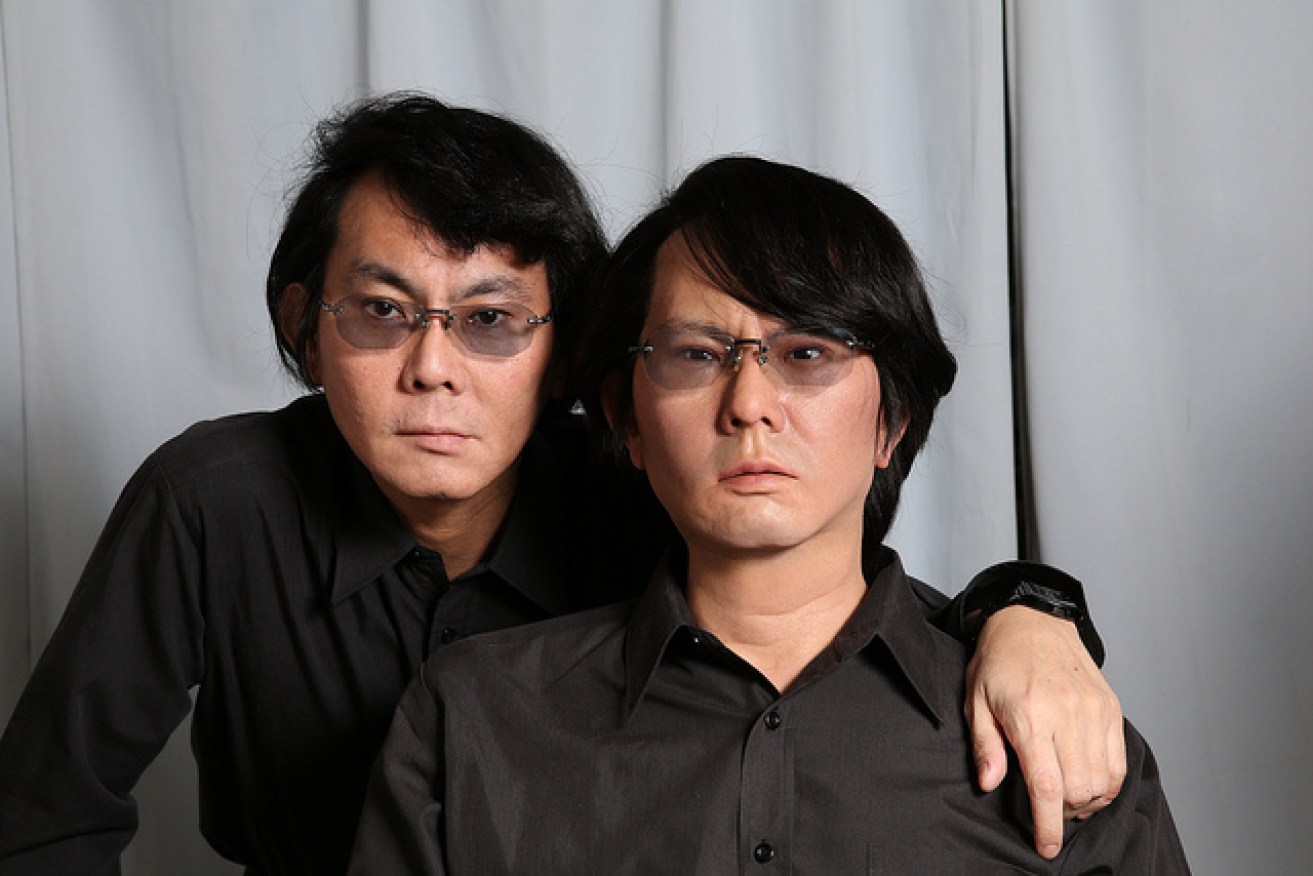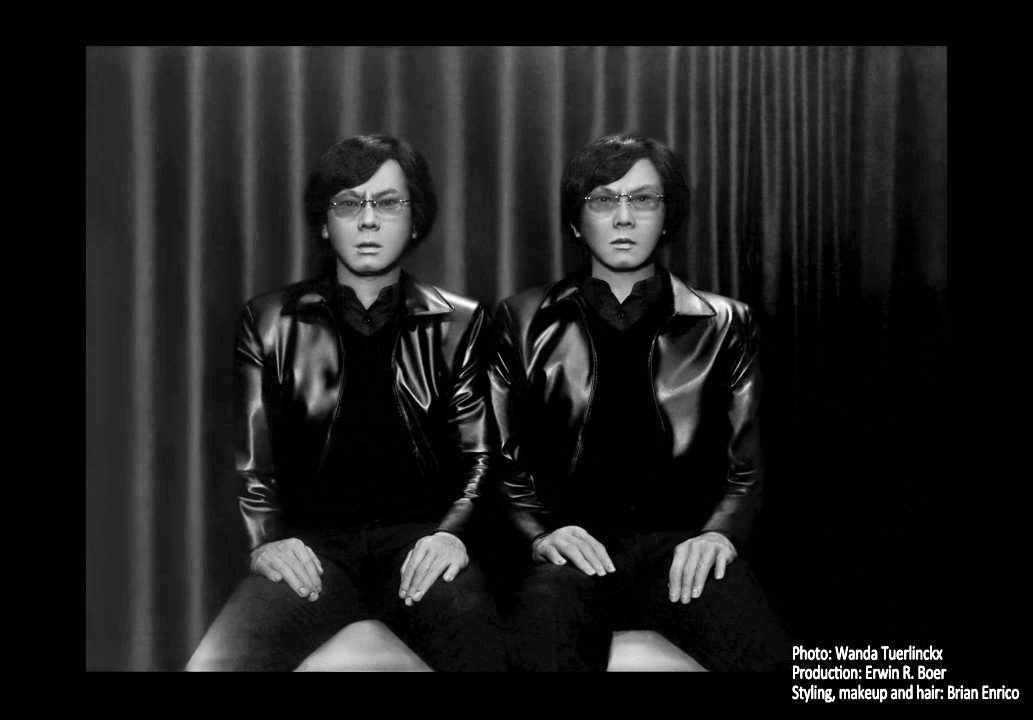Professor and his android twin to open Adelaide conference
A Japanese robotics pioneer will deliver the keynote address at an Adelaide conference in October in conjunction with his android twin, created as part of a project to discover the definition of humanity.


Professor Ishiguro with his robot doppelganger. Photo courtesy University of Osaka
InDaily can reveal that the industry conference at the new Hybrid World Adelaide festival will feature Professor Hiroshi Ishiguro – a famed roboticist and “maverick of android science”.
Ishiguro, director of the Intelligent Robotics Laboratory at Osaka University, will present the keynote speech on the opening night of the conference – the industry component of the digital technology festival – at Tonsley on October 4.
He told InDaily that his android doppelganger – dubbed “Geminoid” – would be with him to help deliver the talk about what a robotic society might look like.
Geminoid was created about 10 years ago as part of Ishiguro’s project to not only solve the engineering challenges involved in creating very human-like robots, but also to answer an overarching philosophical question – what is a human?
His original vision, Ishiguro says, was to make Geminoid an autonomous android but that goal is being approached in small steps, particularly given he wanted the robot to be able to mimic the gestures and tiny facial movements that accompany speech.
Geminoid has mostly been used by Ishiguro as a kind of representation of himself, with speech and movement controlled remotely by him. But that’s changing.
“We think our best performance was at South by Southwest (a renowned technology conference in Austin) last year, which was a combination of chatbot and Geminoid – the android could talk with visitors.”
https://www.youtube.com/watch?v=a_mYvSVG3QY
While big technology companies are moving quickly into artificial intelligence and voice recognition – like the iPhone’s Siri or the Amazon Echo – Ishiguro’s interest is in the line between humans and machine and, for him, this requires a human-like robot.
He does recognise the need for robots to be in the best form for their function (he points out the Amazon Echo is shaped like a simple cylinder and acts, effectively, as a convenient, voice-activated switch). But for some robots designed for communication with humans, he believes a life-like appearance can be important.
“A human-like robot is only needed in some practical applications. We still want to design the best robot for its use and we’re writing a scientific paper about that.”
The distant consequence – that played with in science fiction films like Ghost in the Shell, Westworld and Blade Runner – is the idea of a “conscious” robot, which Ishiguro says will first depend on being able to build “intention and desire” into the machine’s programming. If that can be achieved, the robot may then be able to understand a person’s intentions and desires.
He believes a “perfectly human” robot is a possibility, but unlikely in his lifetime.
“We can’t build perfectly human robots – we (currently) need to limit the purpose and situations where we use robots,” he says. “Gradually we can extend the purpose and situations when you can use robots, [but] we can’t have a perfectly human robot in my lifetime.”
What has been achieved so far, however, is already remarkable.
Human-like robots are being used in Japan as receptionists and one of Ishiguro’s Geminoids “acted” in a film. An Osaka colleague of Ishiguro is working on a human-like robot that can teach English. Ishiguro believes his group’s technology could also be used to create a robot counsellor which, he says, has the advantage of eliminating concerns about sharing intimate and private thoughts with a human.
A newer project, dubbed Erica, is a step on from his other Geminoids: it doesn’t need to be “controlled” in real-time.
“Erica is a kind of totally autonomous system,” he says. “You can enjoy a conversation with Erica for around 10 minutes.” He adds, though, that Erica’s “autonomy” remains quite limited.
Ishiguro’s robots are often described as “creepy”, perhaps an example of the phenomenon described by another Japanese roboticist, Masahiro Mori, as the “uncanny valley” – that sense of unease when we encounter something that is close to, but not quite, human.
However, Ishiguro believes that Japanese people are much more accepting of human-like robots because of the island nation’s long history of isolation, and traditional religious beliefs which, unlike western religion, did not elevate humans to a special place above other animals, plants or even the surrounding environment.
“We never distinguished the human from others,” he says. “In European countries they consider the human as very special – they carefully distinguish people. In Japan we don’t have any religion that distinguishes humans from others.”
And this brings Ishiguro to the heart of his work – what is it to be human?
“It’s quite difficult to define the difference between machine and human,” he says. “Finding that definition is our research goal. That’s the final answer.
“We need to understand what a human is – so a human-like robot is important.”
He does not yet have the answer to this question, but believes it lies in the intelligence of an entity, pointing out that the ways humans themselves have defined themselves has changed vastly over the centuries.

Increasingly advanced prosthetic technology is an example of how the biological body can’t be the sole definition of humanity.
“We can define humans as the baseline intelligence of the system – but we don’t define humans by biological bodies or entities. Look at disabled people using prosthetics at the Olympics – they are still 100 per cent human.”
The philosophical question has overtaken his interest in the engineering and programming challenges and drives him forwards.
“I can’t give you then right answer now – but I am looking for it – that’s the meaning of my work.”
Hybrid World creative director Robert Tercek said Ishiguro had been invited to the event because robotics and artificial intelligence were set to transform society.
“Robotics, automation and artificial intelligence are the building blocks of a complete transformation that will affect dozens of industries including manufacturing, agriculture, health care, transportation and even services businesses like law and consulting,” he says.
“Ultimately, they will transform society. That’s why it is vitally important to have Professor Ishiguro here in South Australia, sharing his forecast of robotic society.”
Hybrid World’s opening industry event will also include local speakers talking about the challenges of the future, and the solutions they’re planning.
Tickets are on sale now.




